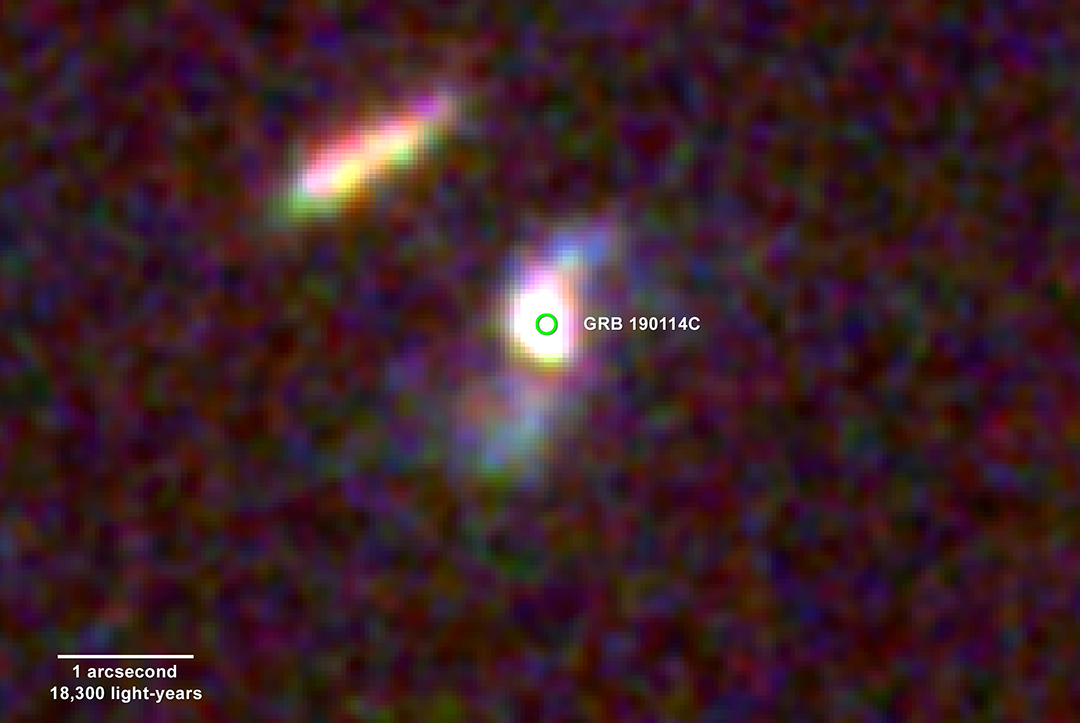By Kristen Mitchell
A team of George Washington University physicists have been at the forefront of a new international collaboration to expand technological capabilities at a Virginia lab that could ultimately help researchers understand more about how particles were formed in the several microseconds after the Big Bang.
More than 150 researchers from 68 institutions in 20 countries will contribute to the construction of a new experimental facility at the Thomas Jefferson National Accelerator Facility, commonly known as Jefferson Lab, in Newport News, Virginia. The national lab, funded by the U.S. Department of Energy Office of Science, is a hub for international physics research, and is frequented by GW faculty and student researchers pursuing groundbreaking research in astrophysics.
"This is a big project, and GW researchers have played a key role as a driving force behind getting this proposal approved," said physics professor Igor Strakovsky, who is leading the university’s contributions on the project alongside professors Bill Briscoe, Michael Doering, Ali Eskanderian, Helmut Haberzettl, Maxim Mai, and Ronald Workman.
The team has advocated for new research and facilitated the large collaboration efforts at the JLab since 2015. GW’s physics researchers have a long history of making significant contributions to a greater understanding of the universe.
The international proposal, coined the KLF Proposal, will add a new high-energy beam of particles, called kaons, or K-mesons, to the lab’s accelerator. The accelerator will speed the K-meson beam toward a hydrogen-deuterium target, forcing new particles to form on impact. The GW research team will design and build three new elements that will go into the new facility. Dr. Strakovsky said they aim to complete the first beam in about three years. That element will be used to collect data, do analysis, interpretation, and, ultimately, publish results in peer-reviewed journals.
According to Dr. Strakovsky, the new facility will provide the long sought, quality experimental data needed to obtain a deeper understanding of the strange quark sector. (Quarks are elementary particles that combine to form larger, composite particles called hadrons, the most familiar of which are protons and neutrons.) In particular, researchers hope to observe previously unidentified subatomic particles called strange baryons or hyperons. Theoretical models show that there should be about a hundred different types of baryons in existence, but scientists have only identified about a fraction of them. The KLF project could be critical to identifying these new objects and understanding their properties.
It will also enable recent progress in hadron spectroscopy—a subfield of particle physics that studies the masses and decays of hadrons—to continue into a new frontier, Dr. Strakovsky said.
Accelerated Learning
In the field of physics, research is often conducted by large, international teams who work together at various facilities around the world. With GW located just a few hours from Jefferson Lab, undergraduate and graduate students are able to learn how to work side-by-side with international teams. Dr. Strakovsky said he expects these opportunities to be strengthened with the new project.
"We are very active in Jefferson Lab, and that provides a good learning opportunity for junior researchers," he said. "Students are able to get training, and they have a chance to learn how international collaborations and huge teams are working and communicating."
Izzy Illari, a Ph.D. candidate in physics and Provost Graduate Fellow, began working at the JLab shortly after they came to GW in 2017. While they are studying to become an experimental physicist, they are also gaining experience with hands-on work. They have been able to work on collaborations at JLab, meet senior researchers and work with mentors to develop their thesis proposal.
The experience of seeing their ideas and research come to life at JLab has been academically rewarding, Mx. Illari said.
"Instead of a class lab, you are actually doing work that is for a national laboratory," they said. "You can do things, see it get implemented, collect data and then maybe be there to use that data to complete a thesis. If you want to do hands on stuff—you can do that at JLab."




